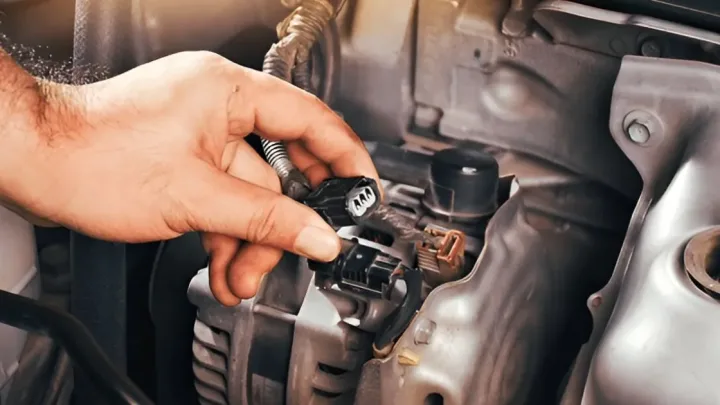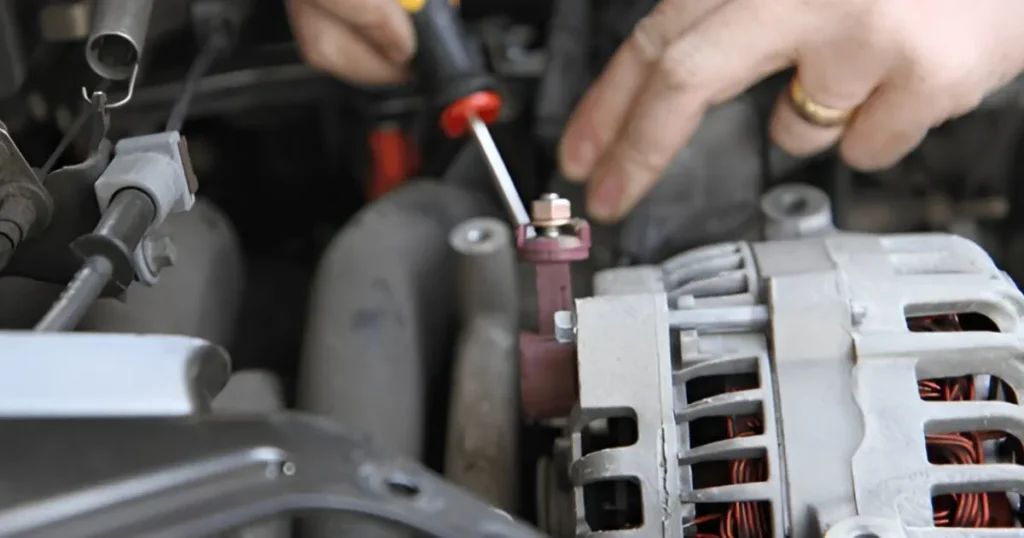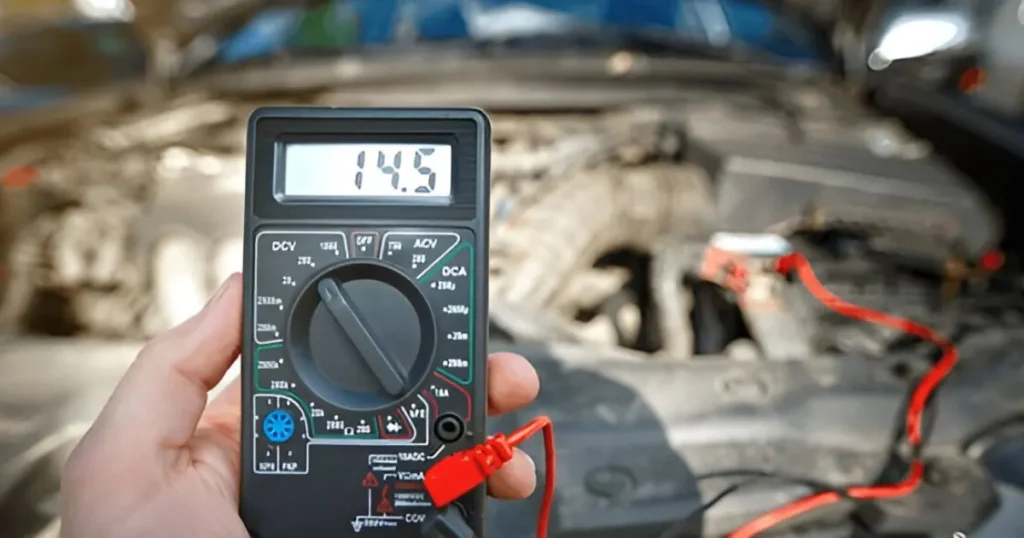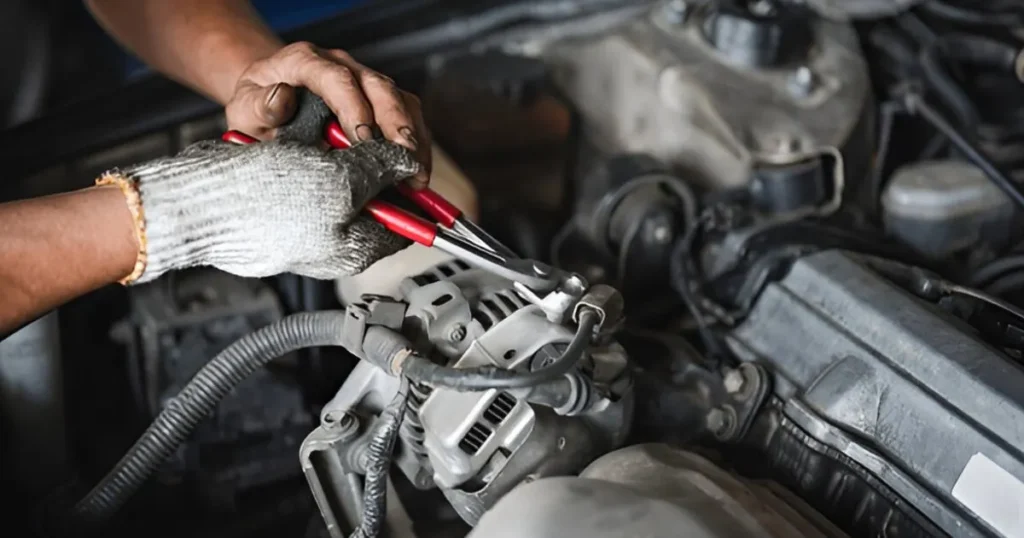
Your car alternator might be bad if your vehicle's lights dim or its battery dies frequently. Signs also include strange noises or the smell of burning rubber.
Identifying a failing alternator early can save you from getting stranded and incurring costly repairs. The alternator plays a crucial role in your car's electrical system by charging the battery while the engine runs. Without a properly functioning alternator, your vehicle can't sustain the power needed for headlights, the radio, and other essential features. Car owners often overlook alternator health until warning signs appear. Recognizing these early indicators ensures your car remains reliable.
Keeping an eye on your vehicle's performance and conducting regular maintenance checks are your best defense against alternator problems. By understanding the role of an alternator and staying alert to the signs of its failure, you can ensure your car remains in top condition, avoiding unexpected breakdowns and ensuring a smoother, safer driving experience.
Introduction To Car Alternator Functionality
An alternator is key to a car's power system. It charges the battery. It also powers the car's electrical systems while it runs. A working alternator is crucial for a car's performance.
The Role Of An Alternator
The alternator turns mechanical energy into electrical energy. This process uses an engine belt. The alternator provides power to car accessories. It also maintains the battery's charge.
- Charges the car battery
- Runs electrical systems
- Converts mechanical to electrical energy
Consequences Of Alternator Failure
A bad alternator leads to various car troubles. The battery will drain. Electrical accessories will fail. The car might even stop running.
- Battery drains quickly
- Electrical failures in the car
- Potential car breakdown

Key Symptoms Of Alternator Issues
Knowing when your car's alternator is failing is key. Alternators charge the battery and power the electrical system when the engine runs. Without a working alternator, your car struggles. Here, we discuss key symptoms of alternator issues.
Dimming Or Flickering Lights
One of the first signs of an alternator problem is dimming or flickering lights. This happens because the alternator can't maintain power levels. You might notice this on the dashboard, headlights, or interior lights.
Accessory Malfunctions
Accessory malfunctions also indicate a bad alternator. This includes issues with power windows, radio, or air conditioning. These accessories might work slower or stop working as the alternator fails.
- Battery light on the dashboard lights up.
- Engine struggles to start or stalls.
- Whining or grinding noise from the engine area.
Recognizing these signs early can prevent further damage. Regular checks help spot alternator issues before they worsen. Keep an eye on these symptoms to ensure your car stays reliable.

Battery Troubles And Misconceptions
Many drivers mix up battery issues with alternator problems. Both can stop a car from starting. But, they are not the same. A battery stores power. An alternator charges the battery. Knowing the difference is key.
Dead Battery Vs. Bad Alternator
A dead battery often means lights left on. A car jump-start may fix it. A bad alternator can't recharge the battery. This leads to a dead car, even after a jump-start.
Signs of a bad alternator include:
- Dim lights
- Warning light on dashboard
- Strange noises
- Electrical issues
Testing The Battery
Testing a battery is simple. Use a voltmeter. A healthy battery shows 12.6 volts or more. Below that, it might be time for a new one.
| Voltage | Battery Condition |
|---|---|
| 12.6V+ | Good |
| 12.2V - 12.5V | Charge Soon |
| Below 12.2V | Charge Now |
A drop in voltage while starting the car indicates a bad alternator. Get a professional to check it.
Car troubles can often announce themselves in the form of strange noises, and the alternator is no exception. A failing alternator may produce unusual sounds that could be early warnings. It's crucial to identify these noises to prevent further damage to your vehicle.
Identifying Unusual Sounds
When your alternator starts to go bad, you might hear:
- Whining or whirring as the engine runs
- Grinding noises suggesting worn bearings
- Clicking sounds indicating a failing electrical component
These sounds may vary in volume and pitch. They often get louder with increased engine speed.
Belt And Pulley Inspection
The alternator belt and pulley system is often the source of noise. A thorough inspection can reveal issues:
| Component | Check for |
|---|---|
| Belt | Cracks, fraying, and tension |
| Pulley | Wobble or improper alignment |
Ensure the belt is tight and in good condition. A loose or damaged belt can affect alternator performance.
Warning Lights On Dashboard
Your car's dashboard is a hub of activity. It shows the health of your vehicle. When something goes wrong, warning lights flash. It's vital to understand these signals. Especially if it's your alternator.
Battery Warning Light
The battery light is your first hint. When you see a small battery icon lit, pay attention. It's often red or amber. This means your alternator might not charge the battery. Without charge, your car stops. When you see this light, check your alternator.
Understanding The Voltage Meter
Some cars have a voltage meter on the dashboard. It tells you about the electrical system.
A healthy system shows 13.5 to 14.5 volts. If the needle drops below 12 volts, it's a red flag. Your alternator could be failing. Keep an eye on this gauge.
- Start the car.
- Watch the voltage meter.
- A low reading means trouble.
Don't wait if you see these signs. Visit your mechanic. They can test the alternator.
Early action saves you from getting stuck. Remember, a healthy alternator keeps your car running smooth.

Electrical Issues And Performance
Your car's alternator is the powerhouse of your vehicle. It charges the battery and powers the electrical system while your engine runs. Recognizing signs of a failing alternator is vital for car health and safety. Pay attention to electrical performance and engine behavior.
Stalling And Starting Problems
A bad alternator often leads to stalling and starting issues. When your alternator struggles, your car might not start at all. It's because the battery lacks enough charge. Look for these symptoms:
- Engine won't crank: Your starter needs power to turn the engine.
- Intermittent stalling: Your car might stall during operation.
- Dim headlights: Headlights may flicker or dim at idle.
Erratic Electronic Function
Electronics in your car depend on a steady power supply. A failing alternator causes erratic electronic function. Watch out for these telltale signs:
| Electronic Component | Symptom |
|---|---|
| Dashboard Lights | Flicker or go out |
| Radio | Turns off or changes stations |
| Windows | Slow to roll up or down |
Visual Inspection Of The Alternator
A visual inspection of the alternator can reveal common issues. Spotting problems early saves time and money. Here's what to look for.
Checking For Physical Damage
Start with the alternator's appearance. Look for cracks or rust. These signs suggest the alternator is failing. Also, check for loose mounting brackets. They can cause vibration and damage.
- Inspect for cracks on the alternator body.
- Look for any signs of rust or corrosion.
- Ensure the mounting brackets are tight.
Worn Belts And Connections
Belts and connections play a big role. A worn belt reduces alternator efficiency.
Check the belt for cracks or fraying. Also, inspect electrical connections for looseness or corrosion.
- Examine the belt for cracks or fraying.
- Check all electrical connections.
- Look for corrosion on wires and connectors.
Regular checks keep your car running smoothly. Don't ignore these signs.
Professional Diagnostic Approaches
Professional Diagnostic Approaches help ensure your car stays reliable. A bad alternator can cause major car troubles. Professionals use specific tools and knowledge to diagnose alternator problems.
Using Multimeters And Scanners
A multimeter measures electrical output. A healthy alternator should produce around 13.5 to 14.5 volts. Mechanics connect the multimeter to the car battery. They observe voltage levels while the engine runs. This test reveals the alternator's health. Scanners read car computer data. They detect alternator error codes. Mechanics use scanners to understand the issue without guesswork.
Seeking Expert Evaluation
Experts have years of experience. They look for alternator wear and tear. Mechanics listen for unusual noises. These sounds often signal alternator failure. They check the drive belt tension. A loose belt affects alternator performance.
Mechanics review battery condition too. A bad battery can overwork the alternator. Trained mechanics confirm diagnosis with specialized equipment. They provide accurate assessments. Trust experts to find and fix alternator issues.

Maintaining Your Alternator
Maintaining your alternator is key to your car's health. This vital component charges the battery and powers the electrical system while your engine is running. Neglecting it can lead to a breakdown or costly repairs. Let's explore how to keep your alternator in top shape.
Routine Check-ups
Regular inspections prevent alternator failures. Mechanics test output and look for wear during tune-ups. They ensure connections are tight and belts are in good shape. These steps help spot issues before they worsen.
Best Practices For Longevity
Follow these tips to extend your alternator's life:
- Keep the battery clean: Dirt affects power flow.
- Check the belt tension: A loose belt reduces alternator efficiency.
- Listen for noises: Squeals may signal a belt issue.
- Avoid water exposure: Keep the alternator dry.
Use electronic devices wisely. Overloading the system strains the alternator. Turn off unnecessary accessories when starting the car. This practice keeps the alternator healthy.
| Action | Benefit |
|---|---|
| Regular battery check | Ensures efficient charging |
| Maintain belt tension | Prevents slippage |
Taking Action
Recognizing the signs of a failing car alternator is crucial for vehicle maintenance. Promptly addressing these issues ensures reliability and prevents further damage to your car's electrical system.Your car's alternator is vital for its operation. Recognizing a bad alternator is crucial. Neglect can lead to breakdowns. Prompt action prevents this. Here's how to tackle alternator issues.
When To Replace Your Alternator
- Dim lights or flickering gauges on your dashboard.
- Slow engine crank: Trouble starting the car is a common sign.
- Dead battery: Your alternator might not be charging it.
- Strange noises: Squealing or growling sounds can indicate a problem.
- Warning light: An illuminated battery light suggests alternator issues.
Consult a professional if you notice these signs. They can confirm whether it's time for a replacement.
The Importance Of Timely Repairs
Delaying alternator repairs can cause further damage. It can strain your battery and electrical system. A failed alternator can leave you stranded. Regular maintenance is key. It ensures your car stays reliable.
| ActionBenefitImmediate checkPrevents costly repairsRegular maintenanceEnsures car reliability |
|---|
Don't ignore alternator issues. Address them early. Save time and money. Enjoy a smooth ride.
Related Post
Does Replacing Car Battery Boost Your Ride’s Agility?
How to Clean Car Battery Plates: Quick & Easy Tips
How to Install a Car Battery Holder: Quick & Secure Guide
How to Connect Car Battery Box to Main Battery: Easy Guide
How to Remove Car Battery Cap Safely & Easily
How Do I Know When It’s Time for a New Car Battery?: Signs & Tips
Disclosure
Some links may be affiliate links. That means we may earn a small commission at no extra cost to you.